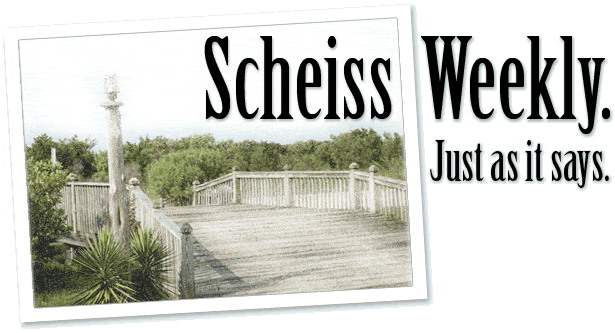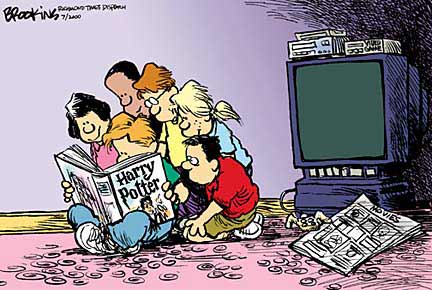Wednesday, September 06, 2006
Zen and the Art of Racing Raisin Boxes

This week, my Intro Writing I classes are studying Einsteinian theory, physics, and non-linear time.
Oh, it's called Chapter 10: The Perfect Tenses, but that's just a cover for what it really is: our language's ability to describe complicated scientific theories with just a handful of helping verbs.
How wondrous is our language, that with the simple addition of "had" or "have," "shall" or "will," we can demonstrate that two things happened in the past, but one was before the other. Or that something began in the past and is still happening. Or that something will be done in the future after something else is done in the future.
I think it's fascinating that what a scientist must explain with diagrams and long complicated essays, any one of us can demonstrate with a helping verb.
I love the whole concept of 'time,' anyway, and for this chapter, I try to remember to take three little Matchbox cars to class with me. I almost always forget, though, and I end up using something else to represent the little cars. Today I used tiny boxes of raisins, and pretended the little maiden on the cover was the driver.
Three cars on the highway, all in different spots, yet close by each other. Each is in a different period of time relative to the other. To the one in the middle, the one in front is in the future because it is where the middle car is going but hasn't reached yet, and the one in back is in the past because it is where the middle car once was but has passed through.
To the car in back, both the other cars are in the future.
To the car in front, both the other cars are in the past.
To Superman, flying above, all the cars are in the present.
To the hitchhiker standing by the side of the road, each of the cars is in the future as long as they are moving, until which time they whizz past, one at a time, briefly sharing the hitchhiker's present for a split second before zooming into yet another perspective of the future.
Our language makes this complicated concept of time into a relatively (<--heh) simple thing. A tiny little helping verb can illustrate the past, present, future, and any combination thereof.
Dear heaven, I love my job.
Back in the middle school, the students fought for the little cars or whatever substituted for them, after this lesson.
Today, at the college level, I asked if anyone cared to have the tiny boxes of raisins and every hand went up. And because I am ever the cool, level-headed, serious professional, I placed all three little boxes on the floor in the middle of the room and walked out. I heard chaos behind me but it really wasn't any of my bidness.
Did I mention how much I love my job?
Time. It may not be as linear as you think. I am sometimes more inclined to believe that time is more like a tree than a flowing river. Yes, a tree that grows upward and at the same time puts out intertwining branches that touch, or don't touch. . . .
Then again, perhaps I've been reading too much Madeleine L'Engle. If there is such a thing as too much Madeleine L'Engle, which there isn't.
Chapter 10: Non-Linear Time and Its Relation To Tiny Boxes of Raisins Which I Understand Einstein Was Very Fond Of The Perfect Tenses.
It's the same thing, you know.
I LOVE my job.


 Hitting the fan like no one else can. . .
Hitting the fan like no one else can. . .






























